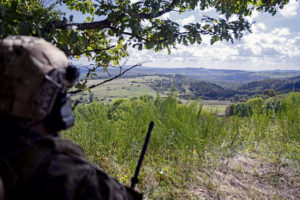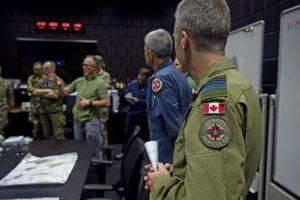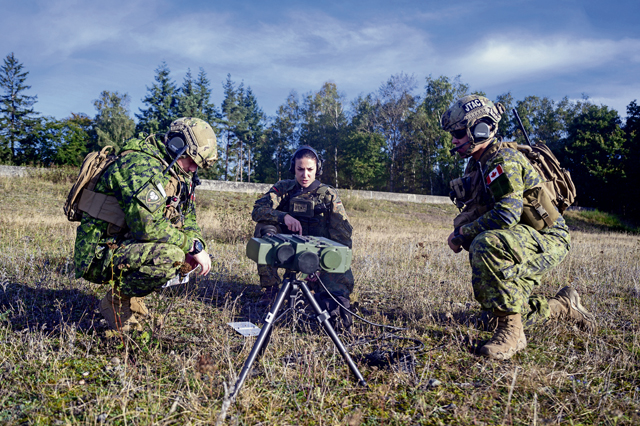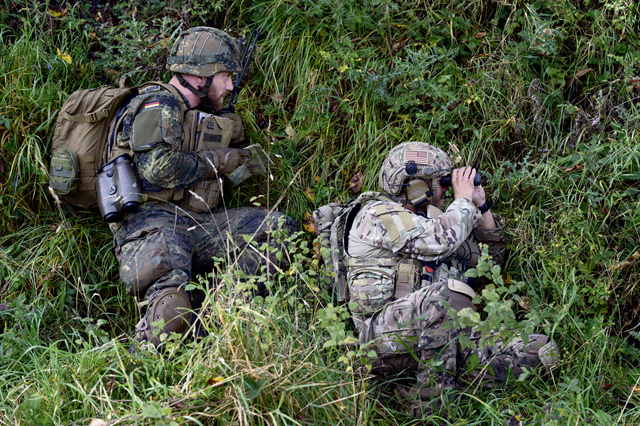
The 4th Combat Training Squadron, in conjunction with U.S. Air Forces in Europe’s Warrior Preparation Center, held a joint terminal attack controller exercise at Einsiedlerhof Air Station and U.S. Army Garrison Baumholder, Sept. 27-30.
Exercise Spartan Bigfoot 21 brought together JTACs from all across the North Atlantic Treaty Organization, with 12 nations participating. The objective was to evolve JTAC training, pushing the known limits and level of capabilities in a contested large-scale combat operation scenario while achieving continuation training requirements to sustain JTAC qualifications.
Spartan Bigfoot 21 was the first time the U.S. Air Forces in Europe – Air Forces Africa’s Warfare Centers integrated live air and land assets while simultaneously using virtual JTAC simulators. Spartan Bigfoot incorporated a real contested air and land environment with the support of volunteer opposing forces and air defenses provided by the 19th Electronic Warfare Squadron (Polygone), Bann, Germany.
“We brought together over 34 JTACs from different nations to collaborate, innovate and contribute towards enhancing employment of close air support, large-scale combat operation scenarios and major joint operations training for our NATO forces,” said U.S. Air Force Lt. Col. Sarah Fortin, 4th CTS director of operations.
During the exercise, the 4th CTS and NATO JTACs trained in surface-to-air threats, suppression of enemy air defenses by fighter aircraft, joint forward observers, countering opposing forces, communications jamming and simulated indirect fires.

“People may solely recognize JTACs from their proven combat record of clearing hot, bomb droppers, providing close air support for troops-in-contact over the last 20 years of coalition operations in Afghanistan,” Fortin said. “However, the evolution of today’s JTACs are so much more than professional bomb droppers. They have become key joint-combined force multipliers.”
Many of the JTACs from NATO countries requested to participate in Spartan Bigfoot 21 to be around other members in their profession and to enhance their skills.
“The combination of being on the range and with training in the simulator gave me two different perspectives of the same thing,” said Canadian Army Capt. Nathan Romkey, 1st Regiment Royal Canadian Horse Artillery, 3rd Canadian Division joint terminal attack controller. “I was able to get a tactical perspective here on the ground, and then in the simulator, I got a higher strategic perspective. We don’t get to do this type of training often in Canada, so being able to participate in this exercise is a good opportunity to become better and identify any shortcomings.”
The ability of the 4th CTS to bring together JTACs from numerous NATO countries, successfully implement mission objectives and enact training qualifications speaks to their ability to build partnerships and enhance interoperability with ally and partner nations.
Exercises like Spartan Bigfoot 21 strengthen the longterm advancement of U.S. interests, maintaining favorable balances of power that deter aggression and support the stability that generates economic growth.
“It was inspiring to see all of the JTACs push their combat training boundaries during Spartan Bigfoot 21 and to watch them learn and grow from the shared training experiences on the training range,” Fortin said. “The importance of training together is what continues to amass and strengthen our partnership capacity, which in the end is our advantage. It is every individual interaction at exercises like Spartan Bigfoot 21 that helps build the trust and bonds that will carry our joint alliance farther, together.”




